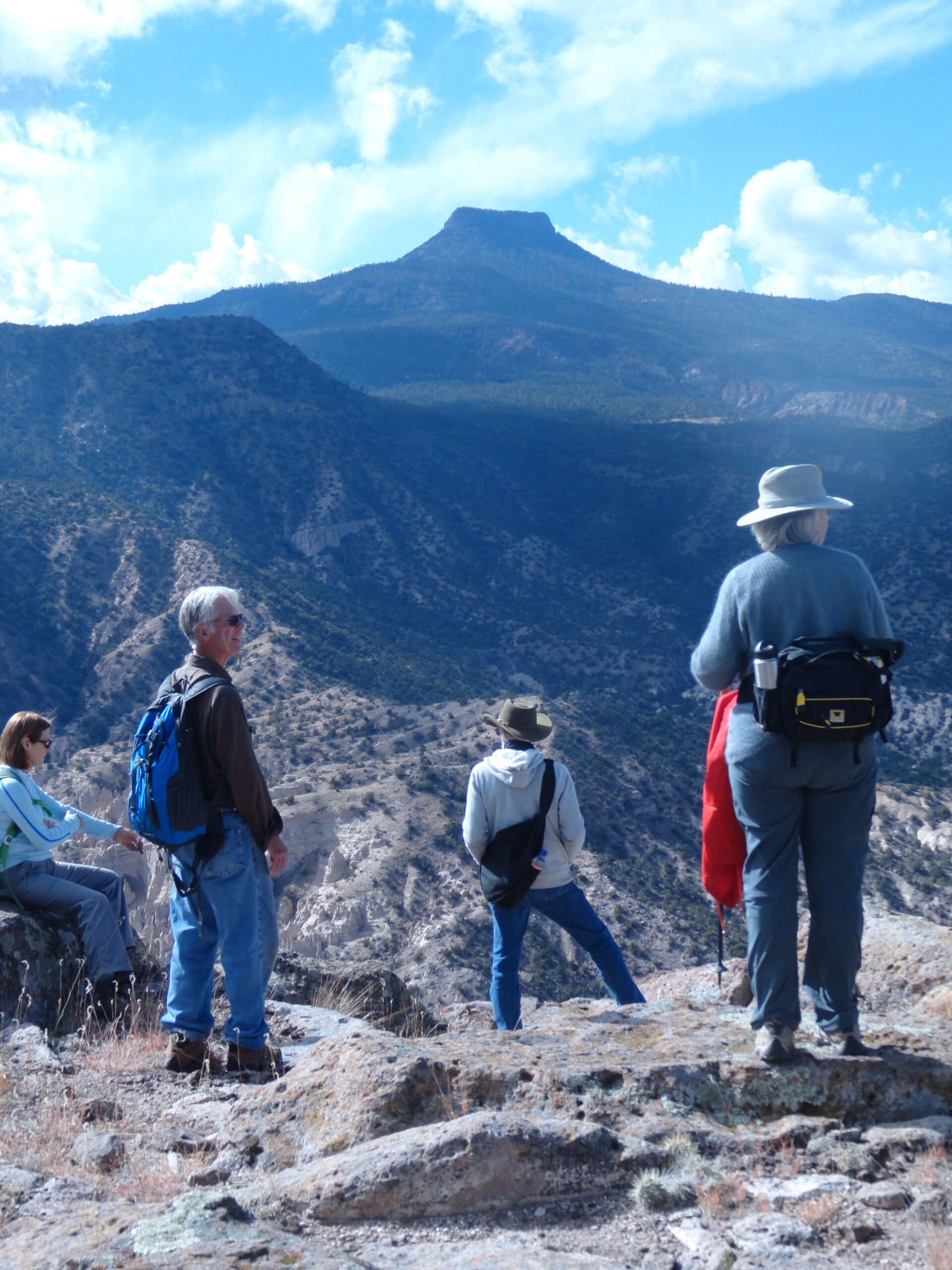It was a hot summer solstice day June 22, 1985, and I was hiking the high country above Santa Fe with a 40-pound backpack. Light streamed through ponderosa pines, dappling the path I walked. My breath was coming harder so a stream along the way was welcome cool relief. Then it was onward and upward. As I approached the summit of Puerto Nambe, I paused for air in the rarefied atmosphere and took in the great expanse nearly 12,000 feet below me. I felt small, insignificant amidst this vast panorama and yet somehow as wide and endless as the sky and its horizon. Far in the distance was Pedernal Peak on the northwest edge of the Jemez Mountain range.
As I approached the summit of Puerto Nambe, I paused for air in the rarefied atmosphere and took in the great expanse nearly 12,000 feet below me. I felt small, insignificant amidst this vast panorama and yet somehow as wide and endless as the sky and its horizon. Far in the distance was Pedernal Peak on the northwest edge of the Jemez Mountain range.
Pedernal in Spanish means “flint.” The first peoples of the area call it by the Keres language name of Tsi Ping, “place of chipping away.” Centuries ago, Pueblo people traded chert and obsidian implements crafted from mines at Tsi Ping. When I once climbed the 10,000-foot volcanic butte, I was scrambling up 8 million years of geologic history and could see the far away mountains of Colorado. Another time I explored the nearby ancient pueblo (also called Tsi Ping) perched atop a mesa and found numerous examples of archeoastronomy, places where researchers believe certain natural features align on specific seasonal, lunar and solar events and figure into sacred ritual observances of the people. As they continue do today in the Pueblos, these cyclical events foster awareness of our essential connection with nature and a sense of balance and inspiration. https://geoinfo.nmt.edu/tour/landmarks/cerro_pedernal/home.html
Silently standing on the summit of the Sangre de Cristos and looking back at Tsi Ping, I was awestruck at the drama of sky and earth before me. I was certainly not the only one to feel that way. In 1958, famed artist Georgia O’Keefe painted Tsi Ping with a ladder to a moon suspended in a turquoise sky. The moon was in perfect balance, halfway between full and new, light slicing it exactly in half. They say Georgia thought if she painted it enough times it would become “hers.” Was the painting just a reflection of surroundings at her Ghost Ranch house? Or did it symbolize some kind of unseen link between us and cosmic forces like the ladder in a sacred ceremonial Pueblo kiva? We can only guess at the answer, but O’Keefe passed on March 6, 1986 and her ashes were spread atop the peak according to her wishes. If the mountain did not become hers, perhaps she was claimed by the mountain. https://www.georgiaokeeffe.net/
O’Keefe was a fearless pioneer when women were more likely to be found cooking in the kitchen and cleaning up after their families. That’s a sacred role, but O’Keefe was an iconoclastic renegade, a rebel with a cause and a profoundly talented one at that. I’m a lot rebel myself and I like that in her. She also took a local young man, Tio Manzanares, under her wing and supported his education and employment. Tio later became a friend of mine as well as an Earth Walks cultural guide. O’Keefe gave generously to the local elementary school and other causes.
It was getting late that summer solstice afternoon, and I needed to make camp in the Puerto Nambe area. But I was glued in astonishment to the rock in the meadow where I sat watching the path of the sun make a direct arc towards the dark pyramid of Tsi Ping. As it reached the horizon the huge burning orb of orange and red set directly behind the pointed peak, bisecting it exactly in half. Had I been here a few days before or after, I would not have seen this phenomenon. In that profound instant, dots and lines connect in my mind.
There are no accidents. I was watching this convergence of sun and earth that in my bones I knew was a part of ancient rituals at this very spot. I had not only a visual connection with Tsi Ping at that moment, but something else powerful, unnamable, timeless. The sun set and I had to set up my camp for the night. Hoisting up my backpack I walked the steep mountain pass trail into the growing darkness of evening, like walking up the steps of Georgia’s ladder to the sky. Somewhere above me that moon must have been hanging in perfect balance.
